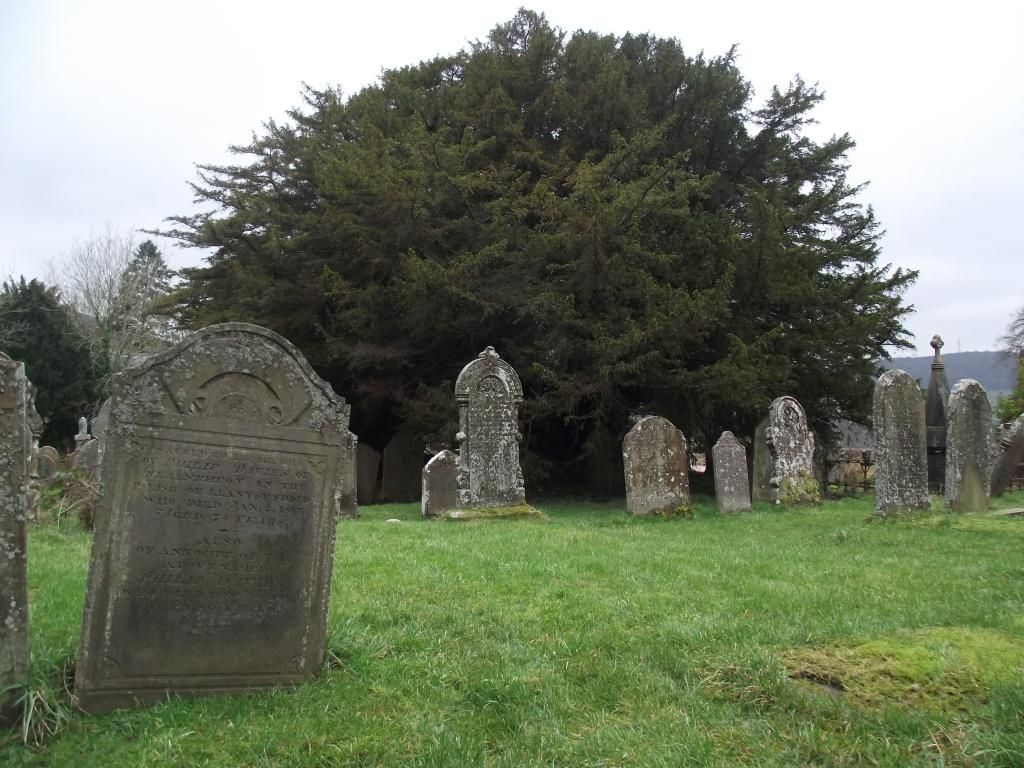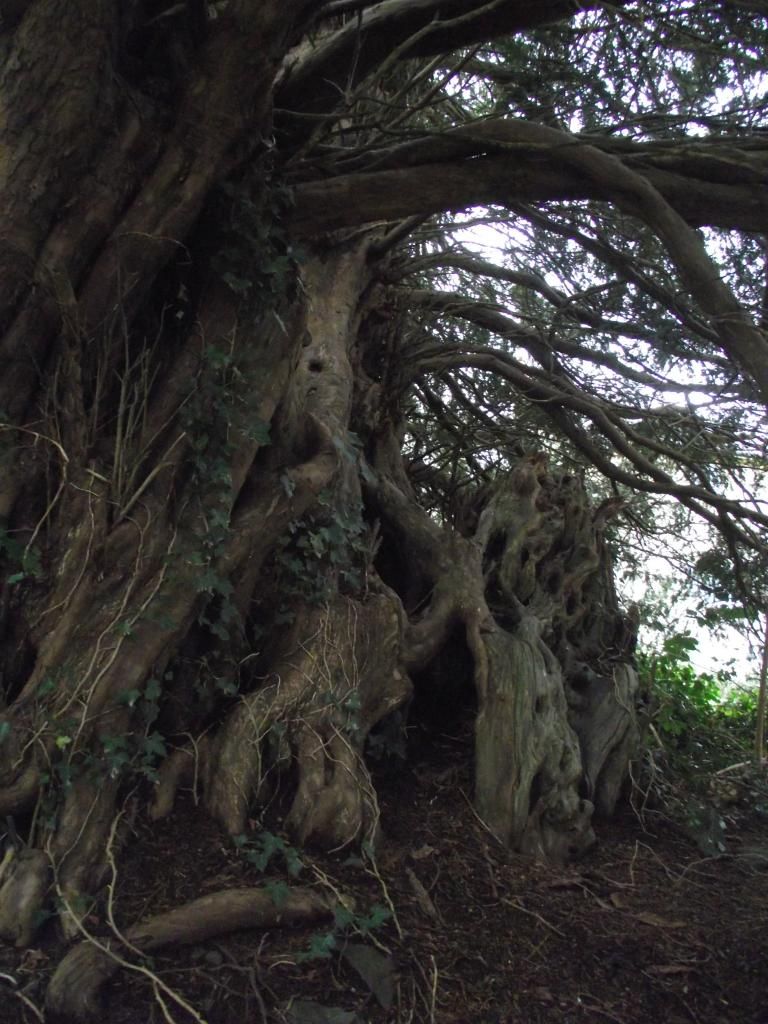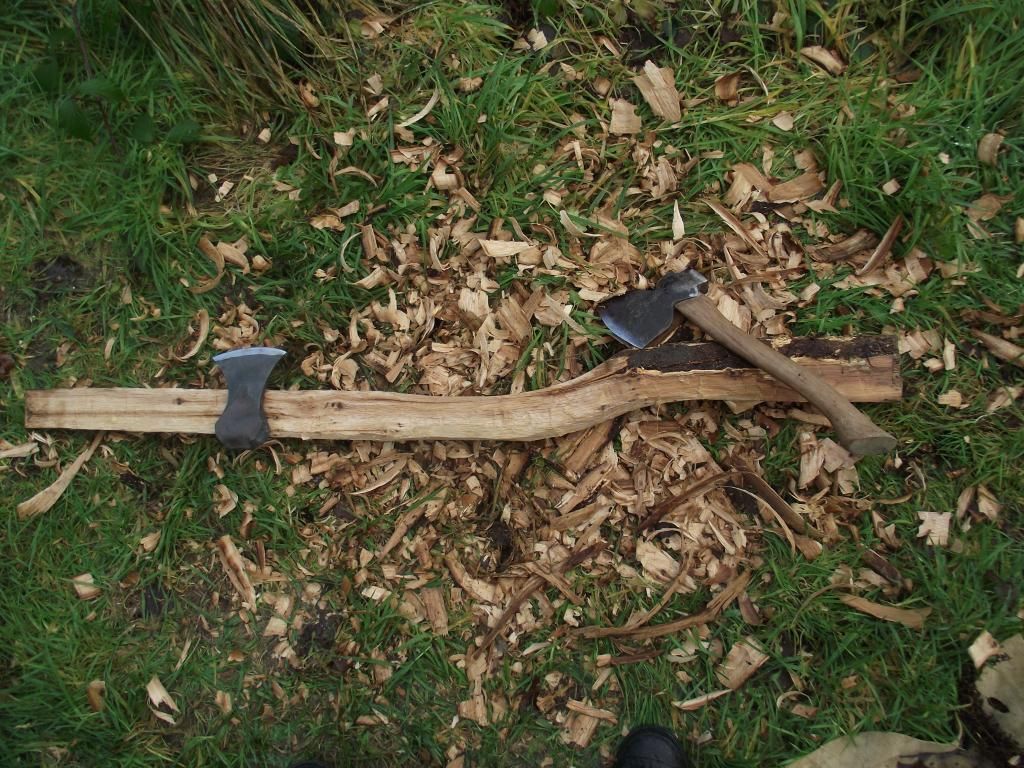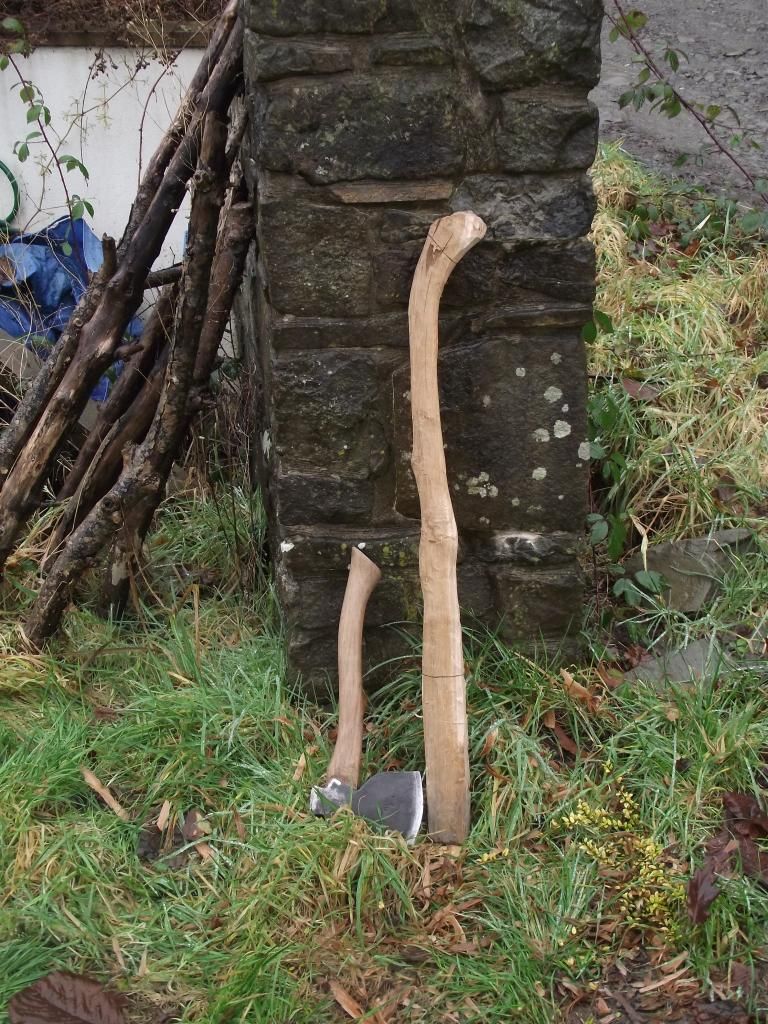I have been thinking about traditional forms of the axe used
in timber framing and log building, one of the quintessential types is the
“Side-Axe”, so called because it allows the user to stand to the side of the
timber or beam and hew without having to use the tool awkwardly as the bit
(blade) is orientated at an angle to the shaft.
Many of the older style of axes are exciting works of iron
that show millennia of evolution and improvements to design. There are other
methods of production that I want explore that involve many delicate process’.
The most important thing to understand about the design of older axes is that
they are made of Wrought Iron, not steel and as such the grain flow of the
material needs to be considered before an axe can be made.
I’ve made this axe using an altered form of the asymmetric
wrap that Jim Austin has been exploring in his research on Viking methods of construction;
my own research has shown that this technique was widely used in axe
manufacture until the modern age and the advent of homogenised, low to zero
slag alloys which can be worked more directly with punching and drifting
methods as the material wont splits apart under these stresses.
The stock I began with was around 5 feet of 20x 50 mild
steel, the end of which was upset on a block on the floor to thicken the stock
further in anticipation of the forming a wide Bit later on as the axe I have
made is also of the “broad-axe” family having and edge length just over 6 inches.
Upsetting is done whilst the stock is still long and very
heavy to allow more force to be delivered in each strike.
(Apologies, I have no video editing skills or software so
all of my films are Very loud! But then again, so is my work…. You have been
warned!)
I also forged this tool, called a butcher, to help making
the early defining cuts.
The Butcher is a hafted top set normally struck by a
helper with a sledge but can be used by the smith if the work is held between
the legs.
This is neatened up over my stake Anvil which has sharper
edges
This neatened piece is measured to check symmetry and then
folded over and welded onto itself. The faces that are welded to each other are
over thick to allow multiple welding passes to ensure a thorough bond.
Before the weld is completed, the axe is held vertically and
the butcher is used again to fiercely cut through the weld I have just set,
this pushes the mass of the axe forward but also upsets the area of the weld,
thickening it again so it can be gently worked at welding temp to finish.
Once the eye had been mostly welded, the eye was trued up
with a large tapering square mandrill.
Square eyes are more common on older styles of working axe
and in my opinion allow for simpler fitting of a haft.
Finaly the high carbon edge was inserted and welded in, the
form was forged out with fullers and flatters and left to normalise before
being rough ground and hardened.
The head was ground on the reverse side and the black scale
was treated with beeswax to protect against rust.
This axe head is for sale
I am making some more
working axes in the coming weeks as well as some more decorative and embellished
styles using a range of techniques. I am available to make specialist axes of any kind, please
contact me either here or though my Facebook page here-





























